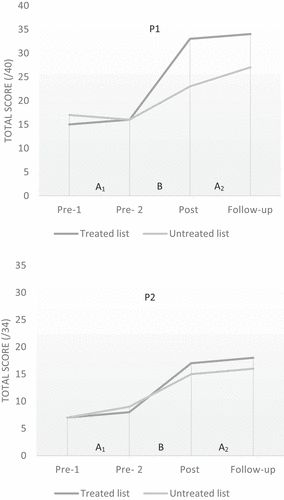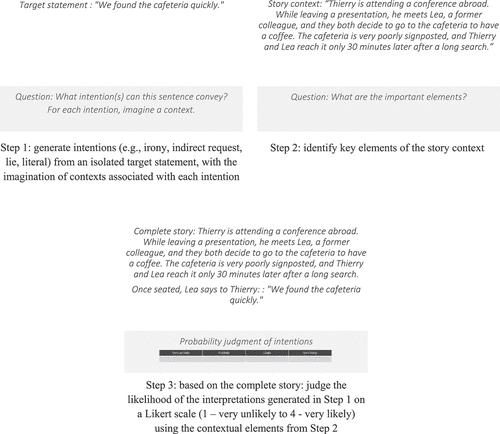Figures & data
Figure 1. Study design

Table 1. Sociodemographic characteristics, neuropsychological and pragmatic data for both participants (P1 and P2)
Figure 3. Performance of participants P1 and P2 on both lists (treated, untreated) during the three treatment phases (A1 pre-treatment, B treatment and A2 post-treatment)

Table 2. Correct answers for each communicative intention in the written intention task for the two lists (treated, untreated) in the four assessment sessions for both participants (P1 and P2)
Table 3. Results on generalisation measures in ecological situations, cognitive processes likely to underlie nonliteral language comprehension, and the control task during the three treatment phases for both participants (P1 and P2)

